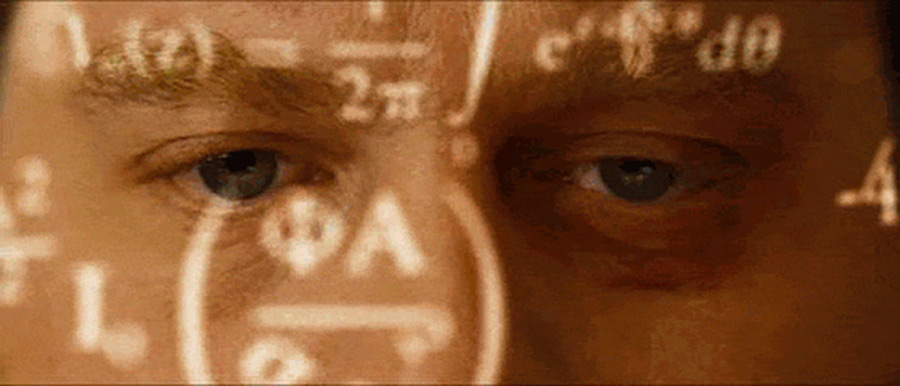A few months ago, I wrote a masterpiece article teaching you people the basics of set theory. Go back and read that again before continuing on this wild ride. Learn it, live it.
I’m sure you guys at some point in your lives have heard of probability unless you live in an igloo like DGDub. It is one of the most useful branches of statistics. Lets start with the basic definition of probability.
Probability is the extent to which an event is likely to occur, measured by the ratio of the favorable cases to the whole number of cases possible. The probability of an event A is denoted as P(A), “P” for probability. Here’s an example. Suppose you roll a 6-sided fair die. Let the event A= a 6 is rolled, thus P(A)=1/6, since any one of the six faces of the die are equally likely to land face up. So easy, even Nav can do it.
Here are the axioms of probability. The probability function P must satisfy the following conditions:
(i) 0≤P(a)≤1 for each a in the sample space, thus probability can never be negative and can never exceed 1. If it does, you done fucked up.
(ii) P[a]+P[b]+p[c]+…=1 for all points in the sample space.
An example of point (ii): Recall that in our previous die rolling example, the probability of one side coming up is 1/6. If you add up all the probabilities of each face, you get 1/6+1/6+1/6+1/6+1/6+1/6=1. Basically, if you add up all the possible points, it will equal to 1.
Here are some lesser rules concerning probability.
(i) P[S]=1 if S is the entire probability space…this is similar to (ii) stated above.
(ii) P(Φ)=0, where Φ is called the empty set as we learned in the previous article.
(iii) If A is a subset of B, then P[A]≤P[B].
(iv) For any two events, say A and B, P[A∪B]=P[A]+P[B]-P[A∩B].
(v) For any event A, P[A’]=1-P[A]. This is called the complement of A.
(vi) For any events A and B, P[A]=P[A∩B]+P[A∩B’].
(vii) For any events A and B, P[A’∩B’]=P[A∪B]’=1-P[A∪B].
RECALL, A∪B (A union B) means A OR B and A∩B (A intersection B) means A AND B.
Lets do a real life problem using the shit above.
Example: The probability that a visit to a primary care physician’s (PCP) office results in neither lab work nor referral to a specialist is 35%. Of those coming to a PCP’s office, 30% are referred to a specialist and 40% require lab work. Determine the probability that a visit to a PCP’s office results in both lab work AND referral to a specialist.
Here are your multiple choice answer choices: A) 0.05 B) 0.12 C) 0.18 D) 0.25 E) 0.35
*blank stare ensues*
Lets break this down piece by piece. Start with what you’re given.
Lets let:
L (for lab) be the event that someone’s visit results in lab work
R (for referral) be the event that someone is referred to a specialist
We are given from the word problem:
a) 35% don’t need lab work NOR are they referred to a specialist. (nor means AND, so we use ∩). In other words, P[L’∩R’]=0.35 is what this statement means (convert percentage to decimal by dividing by 100).
b) 30% are referred, thus P[R]=0.30
c) 40% require lab work, thus P[L]=0.40
We know from (vi) above, P[L’∩R’]=P[L∪R]’=1-P[L∪R]. From (iv) above, we know that P[L∪R]=P[L]+P[R]-P[L∩R]. Thus, 1-P[L∪R]=1-(P[L]+P[R]-P[L∩R])
Distributing the negative sign, P[L’∩R’]=1-P[L]-P[R]+P[L∩R]=0.35.
The problem tells us to find the probability the patient needs BOTH (AND) a referral and lab work. So we need to find P[L∩R].
From the equation we found 2 lines ago, we can solve for P[L∩R]. Rearranging: 0.35-1+P[L]+P[R]=P[L∩R]…plugging in P[L] and P[R], which are given, we get: 0.35-1+0.40+0.30=P[L∩R]=0.05
Therefore, our answer is P[L∩R]=0.05, which is answer choice A.
Homework question for all of SKA.
A survey of a group’s pornography viewing revealed the following information:
(i) 59% watch PornHub
(ii) 57% watch XHamster
(ii) 50% watch BOTH PornHub and XHamster
Find the percentage of the group that did not watch PornHub NOR XHamster.
Answer choices: A) 0% B) 30% C) 42% D) 34% E) 16%
Hint: you are trying to find P[A’∩B’].
Give me your answer, I am keeping track of your grades.


